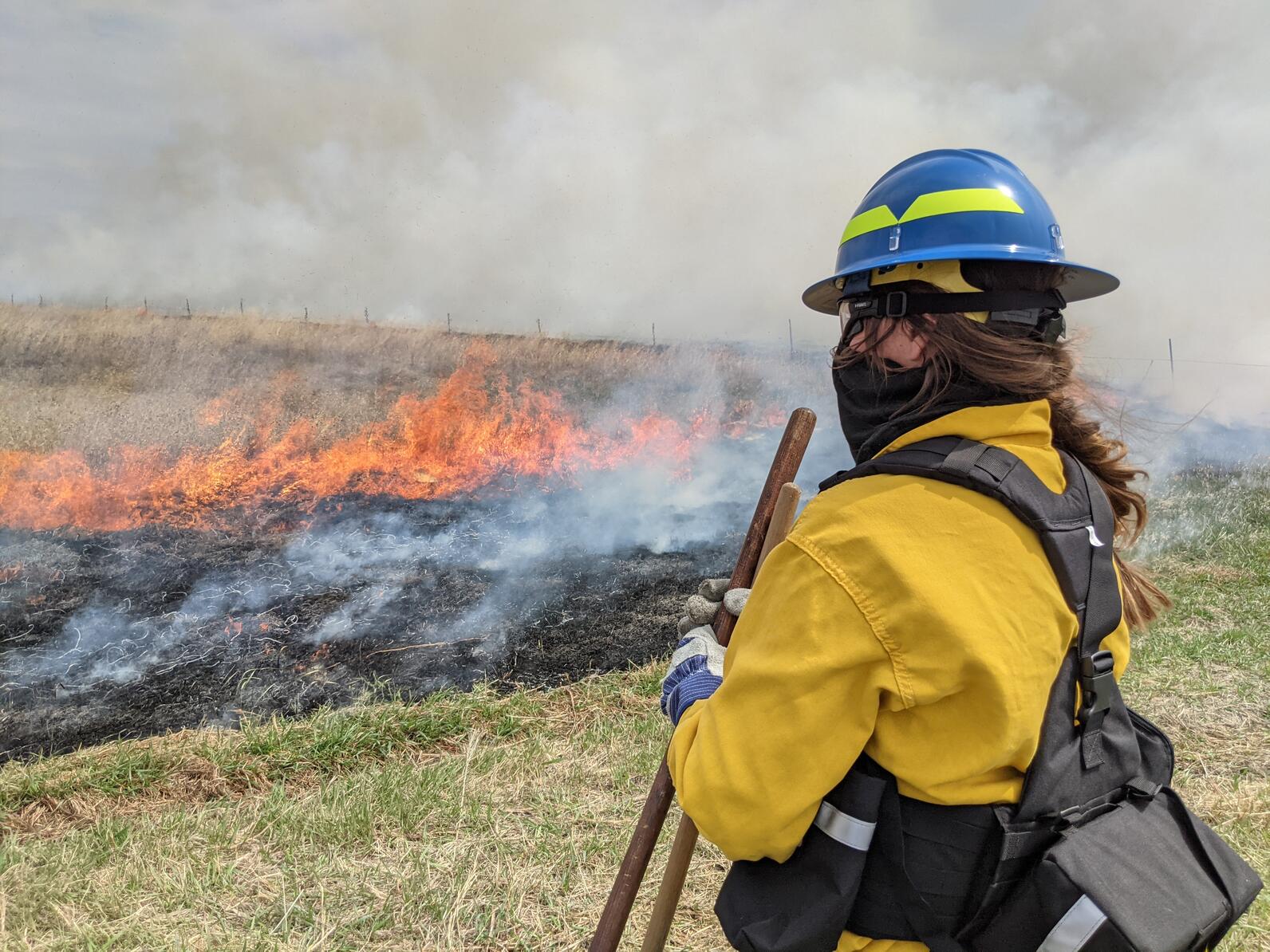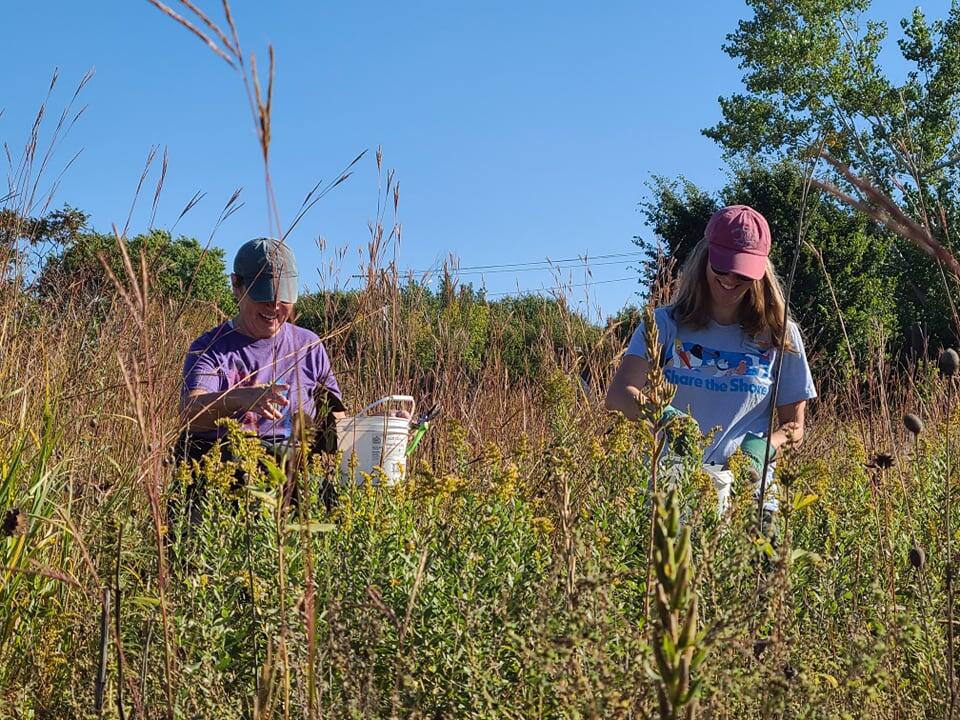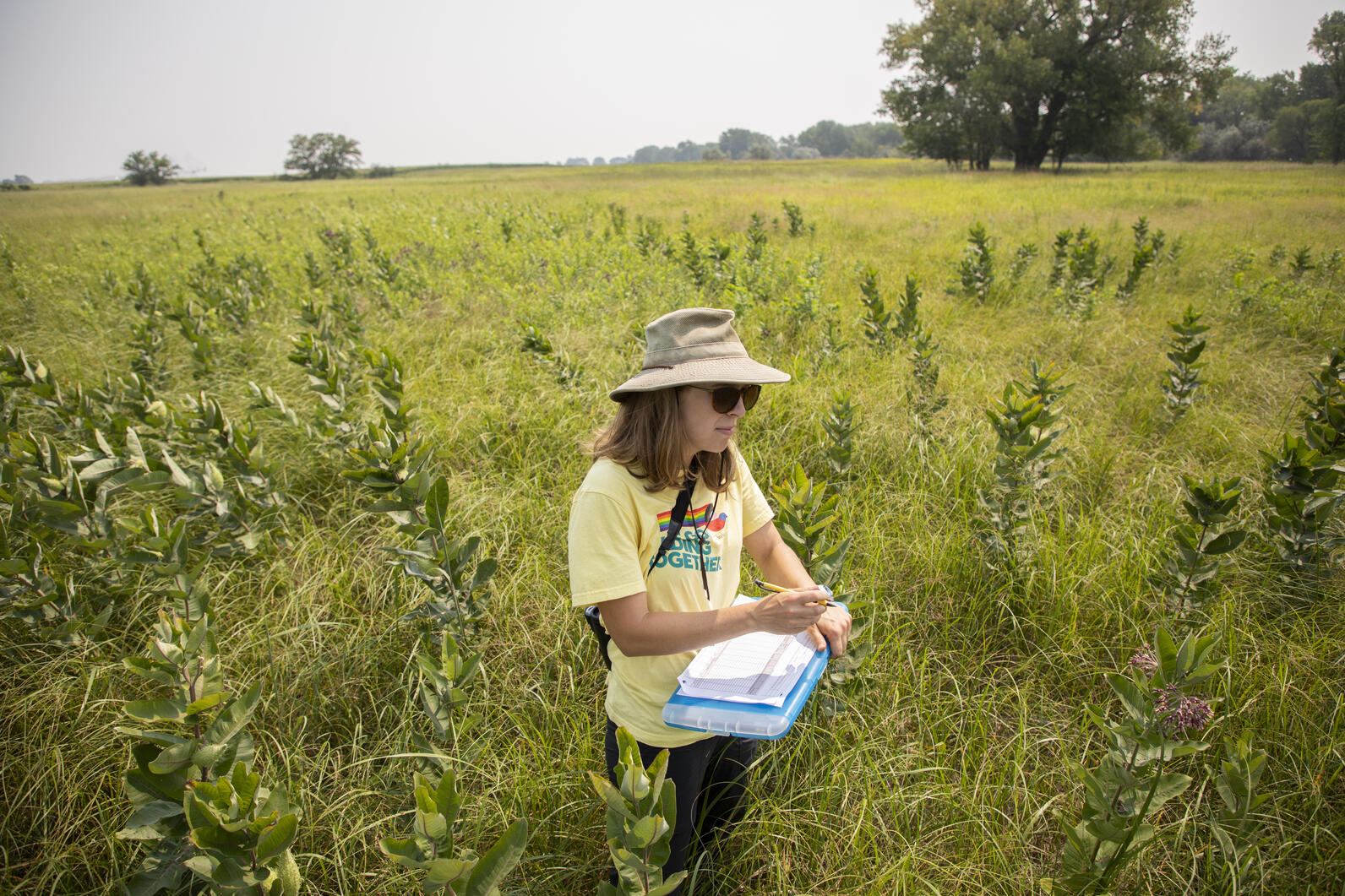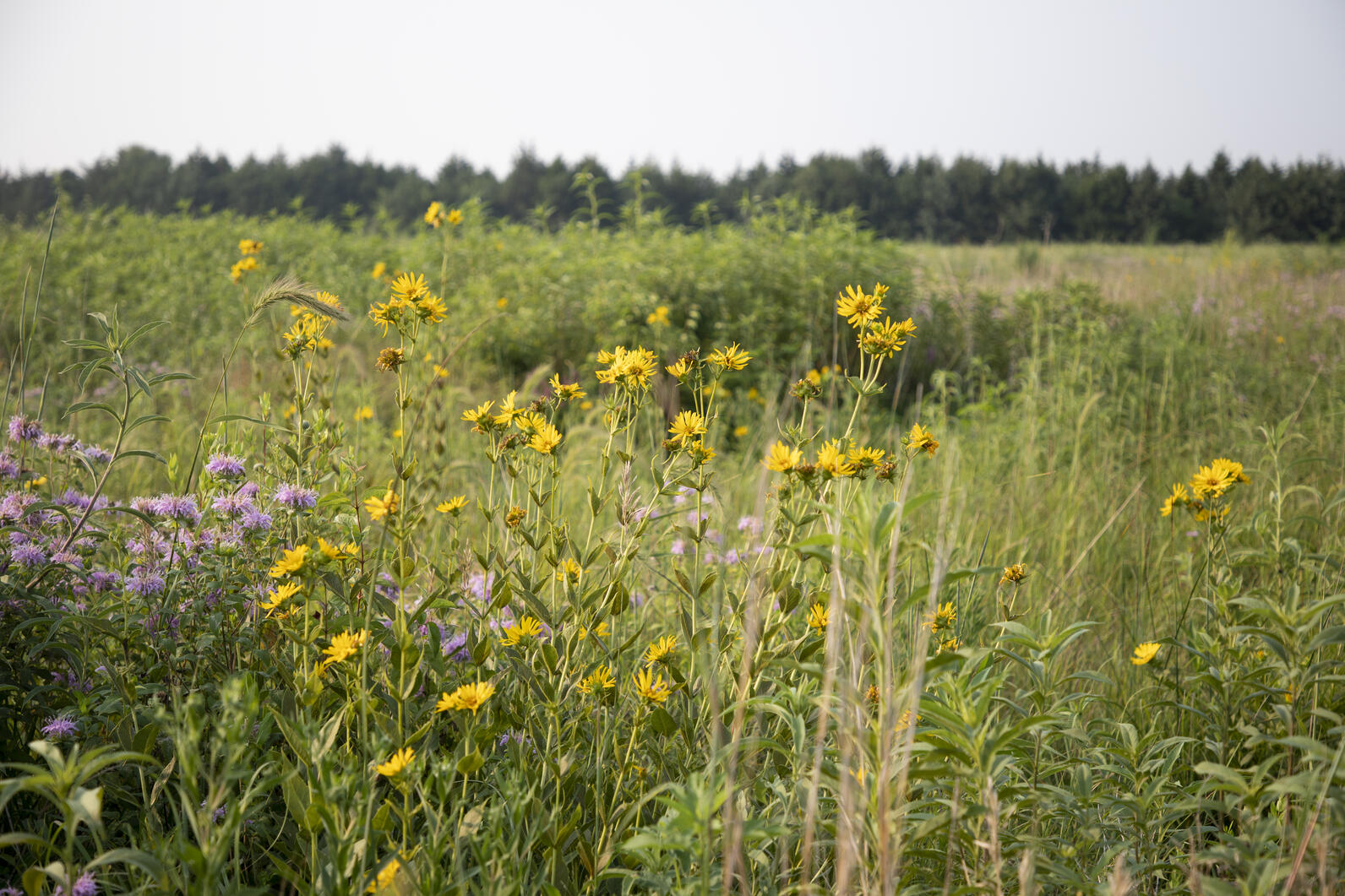Grasshopper Sparrow
Latin: Ammodramus savannarum
Management and restoration of Rowe's prairies
Photo: Cody Wagner/Audubon
Beyond the banks of the Platte River, most of the acres protected and managed at the Lillian Annette Rowe Bird Sanctuary (Rowe Sanctuary) are grasslands. The grasslands at Rowe Sanctuary are varied, ranging in classification from wet meadow to lowland tallgrass prairie to upland mixed-grass prairie; remnant and restored. Together they make up one of the largest, contiguous grassland complexes remaining in the Central Platte River Valley. Conservation of grassland ecosystems within this region is critical- it is estimated that only 1 percent of grasslands remain in North America today. Adjacent to one of the largest migratory crane roosts in the world, Rowe’s grasslands provide important secondary roosting and foraging areas for Sandhill Cranes and endangered Whooping Cranes as well as breeding habitat for many grassland-dependant bird species .
Prairies provide critical habitat that several grassland animal species depend on for raising young, fuel for migration, and winter refuge. Since animals depend primarily on plants to support them during these different life cycles, Rowe Sanctuary's goal is to create diverse plant communities with the necessary elements that animals need to survive and reproduce. Each species has unique habitat needs, so we strive to maintain a mosaic of vegetation structure that supports the necessary habitat requirements for target species and promotes resiliency in the face of threats such as climate change. Practices such as prescribed fire, grazing, haying, rest and the control of invasive plants are all commonly practiced management techniques that help to maintain this mosaic and create a vital refuge for birds and other wildlife.

The low and often flooded nature of the grasslands at Rowe Sanctuary saved most of the landscape from the plow as agriculture expanded in the region in the late 1800s. For over 30 years, Rowe has worked to restore continuity to Nebraska's historic grassland landscapes in the Central Platte River Valley by converting cropground back to prairie. From 2017-2019, Audubon converted over 130 acres back to prairie. For all restorations, Rowe strives to use local-ecotype and high diversity seed mixes that often contain seed from up to 200 different plant species. With the help of grant funding, donations, and conservation partnerships, these restorations help provide large blocks of prairie habitat for birds, pollinators and other wildlife. Rowe Sanctuary also hosts an annual seed harvest event where participants are encouraged to venture out into our prairies to collect prairie seed. After, participants learn how we process and store the seed for future restortation projects.

The Sanctuary’s grassland habitats support a suite of grassland-obligate species including but not limited to Bobolink, Dickcissel, Western Meadowlark, Grasshopper Sparrow, and Northern Harrier. Already one of the most rapidly declining groups of birds, many species are moderately to highly vulnerable to climate change and other threats. Since 2014 Rowe staff and volunteers have completed intensive surveys of grassland bird species on Rowe's prairies. Combined with management records, the results from our surveys help us to make habitat management decisions for prairie birds so that Rowe Sanctuary can be a stronghold for birds now and in the future.
In addition to grassland birds, Sanctuary staff and volunteers also monitor other species to fill information gaps and instruct management decisions. In 2020, Rowe implemented surveys of Regal Fritillaries, a butterfly species that is rapidly declining in most of its range and is currently a candidate for the Endangered Species Act.

Platte River Wet Meadow Donated in Memory of George and Mildred Jackson
The Charlotte Adelman and Bernard L. Schwartz Native Prairie Preserve
John J. Dinan Memorial Bird Conservation Area

Audubon's North American Grasslands & Birds Report (2019) assessed the vulnerability of representative grassland birds and their habitat to warming global temperatures. Our findings make it clear that in addition to protecting remaining grasslands, we must also advance solutions that reduce carbon emissions, and prioritize and direct resources and other investments to the places that will support grassland birds and other wildlife into the future.
Tour reservations open online on Wednesday, January 8, 2026, at 9:00 am CST. One of the greatest wildlife spectacles in North America, this gathering of cranes is the largest in the world.
This year for crane season, you can now book special events and programs in addition to your guided viewing experience.
Plan your visit. Whether you’re interested in programming, photography, or a guided tour, there’s something for everyone.